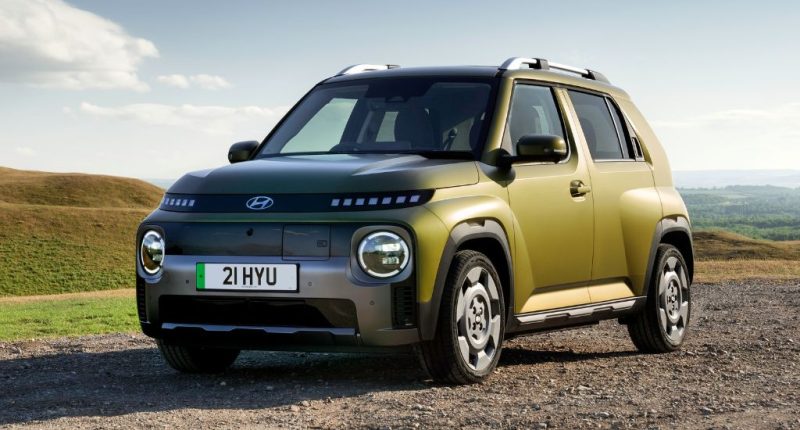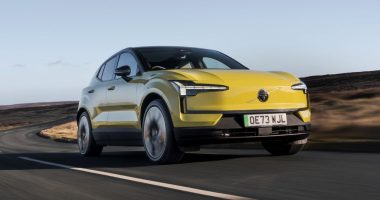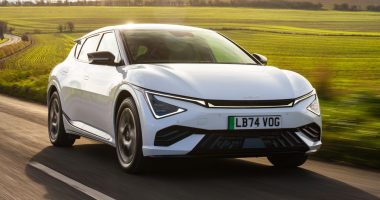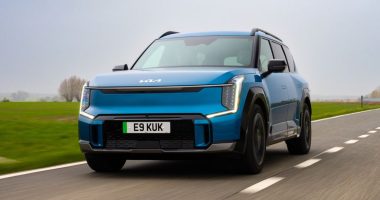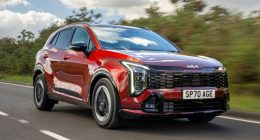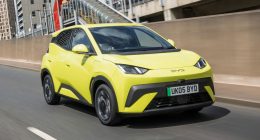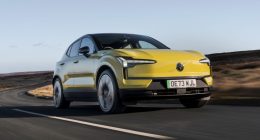This pint-sized city runaround is the smallest Electric Vehicle Hyundai build – and it packs quite a punch. It has an interesting backstory, with its roots capable of being traced back to the Hyundai Casper – a petrol-powered car that hit the market in South Korea three years ago.
As you will discover, this nameplate comes jammed packed with a plethora of big car tech and features and, as such, puts it in the firing line of everything from the reborn Renault 5 to the Mini Cooper Electric. And much like those two, the all-new Inster has oodles of personality, those rounded headlights giving it a distinctive – and cute – persona, while the arrangement of square pixel lighting above these is repeated in even bigger numbers at the upright rear.
Hyundai reckons the Inster can be classified as a crossover – though we are not so sure despite the slightly raised ride height, application of dark cladding, and make-believe skid plates. If you are after something that has less ornamental looking traits, can we point you in the direction of the still only front-wheel-drive ‘Inster Cross’ model (£28,745)?
Much like the outside, the Inster’s cabin is a busy place. Some are going to appreciate the fact Hyundai’s engineers have succeeded in cramming so much equipment into such a teeny area. Equally, some won’t be, due to the vast selection of switches and buttons that have been lumped together. Quality on the inside of what is a strict four-seater that features a fold-down front passenger seat to maximise space will not be to everyone’s satisfaction, either; there are just too many hard, scratchy surfaces. The dash, door cards and trim are manufactured from recycled plastic and it shows.
Throwing check seats into the mix and light colours does help set the Inster apart from its abovementioned rivals. Being such a small cabin, the dual 10.25-inch screens (one serves as a digital dashboard and the other the infotainment display) appear bigger than what they are. Both works fine, yet the high-resolution unit plonked on top of the dashboard can be occasionally laggy.
Total cubby space for nick-nacks inside the Inster is average although it should suffice for most drivers and front seat passengers who sit on a (heated) bench rather than individual seats, the middle portion of which incorporates two cup holders. Small door bins, a teeny-object space below the climate controls, and a ribbed trough just above the glovebox complete the storage at your daily disposal.
Climb into the rear and those of a taller disposition benefit from individual reclining seats that can slide back to maximise foot, knee and legroom; it is a standard perk on ‘02’-spec examples but, of course, the penalty is a much-reduced boot. Luckily, there is an underfloor cubby, so if the seats are in their normal position, the cargo area has 280-litres of space that mushrooms to 351-litres if the seats in row two are pushed all the way forward. And dropping these out of the way results in an expanded area that is barely shaded by its longer and wider i20 supermini sibling – 1,059-litres versus the latter’s 1,165-litres.
When it comes to powertrains, there is a choice of two: base ‘01’ versions are equipped with a 42kWh battery giving the motor 97bhp and a claimed range of 203-miles from a full charge. Option two – the longer-range Inster, with a 49kWh battery that ups total power to 115bhp – has a quoted range of 229-miles on 15-inch wheels or 223-miles on the 17-inch alloys. After a week in our hands, between 150- and 160-miles is the best we could muster with the fancier wheels.
As for charge times, it takes approximately five hours and 41 minutes to travel from zero to full using a typical 7kW home wall box. Paired to a rapid charger, with a flow rate of 120kW, you can expect to go from 20% to 80% in around 21 minutes – just enough time to either squeeze in a sprightly walk – or a more leisurely cup of tea and a chocolate bar. Talking of refreshments, as part of the £500 ‘Tech Pack’, owners can power an array of electrical items – kettles, included – via a converter that plugs into the exterior charging port or the 220-volt socket that is located at the base of the centre console. Nifty.
Performance is nippy for such a small car, though do not expect to be setting any land speed records as the 0-62mph time in the 97bhp Inster takes around 11.7 seconds and somewhere in the region of 10.6 seconds with the extra 18bhp powering the front axle. In or around town it is a joy to be in, those dinky proportions make manoeuvring through heavy traffic, or squeezing into the tightest parking spaces, a breeze. Urban driving is what the Inster does best, which is what this car is primarily about, after all, though it can hold its own on a motorway commute where occupants are cocooned from road, wind and vehicle noise.
Even on the arch busting 17-inch wheels the softly damped suspension continues to shine on badly worn tarmac and undulating roads as the pace quickens but less so through a series of corners, twists or turns as the springs give way to a little too much roll. Incorporating pixel lighting similar to the Ioniq 5, the responsive steering wheel provides easy access to major controls, including the four drive modes (Eco, Normal, Sport, Snow).
